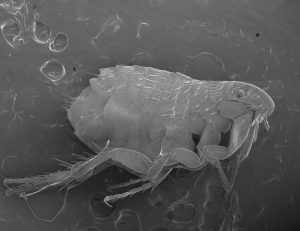Some edge card connector solder joints were reportedly failing open. This is an optical image of the connector that showed fractures (red arrows) in the epoxy staking material apparently used to attempt to mitigate the problem.

This is an optical image at intermediate stage of micro-sectioning into the suspect solder joints. The displacements (yellow arrows) are very large relative to what the solder joints could be expected to survive. Note also that the back face of the connector body is not normal to the PWB as it should be, which is the likely cause of the mechanical loading on the solder joints. When the subject connector is mated with its mating connector, the loads on the solder joints are exactly as indicated by the displacement vectors shown in this image.

These are SEM images of solder fractures as viewed in a parallel and traverse section of the solder joints. The evidence that these are creep rupture failures includes (1) the large upward displacement of the connector leads and (2) the fact that the fracture propagated through the bulk solder joint rather than through an intermetallic compound layer or at an interface.

So, why didn’t the epoxy staking material work to prevent these failures? Because epoxy has a very low mechanical stiffness relative to the connector leads, so in spite of the addition of staking material the majority of the applied load is still carried through the leads to the solder joints.























 This is a 2 kV SE image of the flea.
This is a 2 kV SE image of the flea. 









